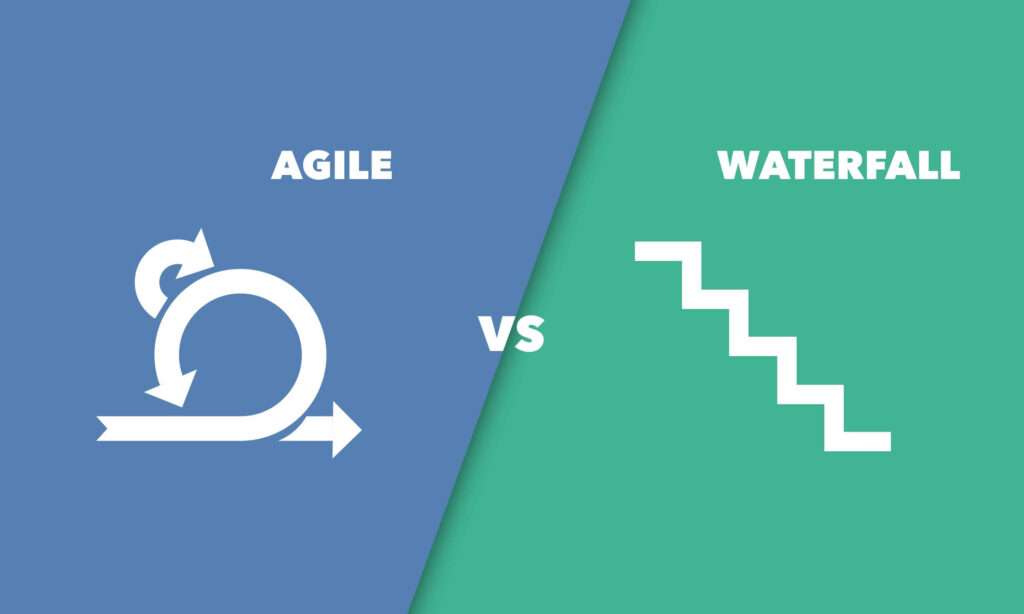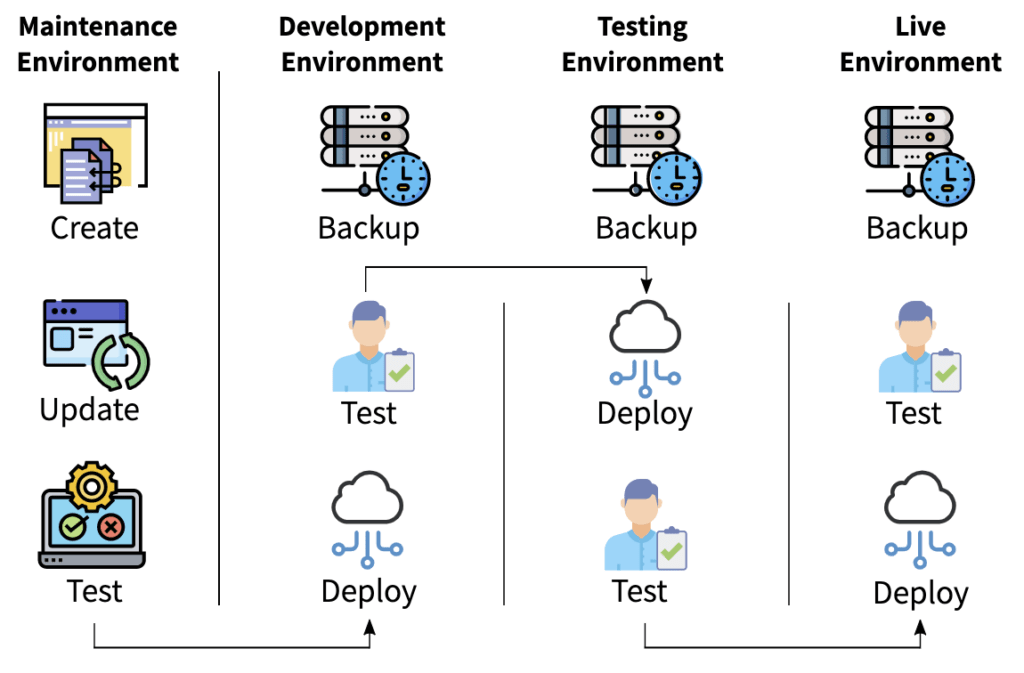WebOps is a relatively new term that describes the interface between an organization’s Information Technology sphere and the Marketing Technology sphere. In contrast to DevOps, WebOps is not solely focused on code and hardware. Rather, it combines IT with content and marketing initiatives for smoother and faster collaboration.
WebOps, a contraction of Web Operations (or Website Operations), is a newer discipline. It more rapidly merges the activities of IT and marketing departments to deploy individual initiatives related to the marketing technology ecosystem. It is also referred to, loosely, as the “MarTech stack”.
What Do WebOps Teams Do?
The goal of WebOps is to improve Return on Investment (ROI) by combining multiple workflows in an Agile, continuous improvement manner that historically has been hampered by waterfall-based, interruptive work queues.

Defining the difference between two powerful methodologies.”
A unified WebOps team can better ensure rapid development, deployment, operation, maintenance, optimization, and recovery of every website in an organization’s portfolio. In other words, a website is useless if it’s slow to load or takes weeks or months to deploy content to a marketing landing page. A website is essentially broken if critical updates are too infrequently applied and nobody implements continuous integration. And, the website can be made nonexistent if there is no coordinated plan for recovery in case of a data breach or loss of a server.
WebOps components include:
- Deployment
- Operation
- Maintenance
- Performance Optimization
- Recovery
Let’s break down these components into what they entail:
Deployment
Deployment of web applications is the obvious starting point of a set of WebOps objectives. Once the website has been designed and approved, it is the job of WebOps professionals to not only launch the website but to ensure that the various components that are related to marketing funnels and activities are in working order.
That includes integrating, enabling, testing, and deploying email, social media, video (streaming and static), customer relationship management (CRM) tools, APIs, and form outputs. It also includes search engine optimization (SEO), Search Engine Marketing (SEM), analytics, and security.
Operation
Once a website is deployed, the focus shifts to operations. There are daily, weekly, monthly, and yearly tasks that each member of the DevOps, WebOps, and sales and marketing teams is involved in.
For example, marketers are working to ensure that ads they’ve purchased or email campaigns they’ve sent are driving traffic to the website.
Once the traffic is driven to the website, if an organization uses a CRM like HubSpot to manage its sales funnel workflow, each salesperson could be tasked with monitoring the chat widget that appears in their particular portion of the website. If a lead contacts them through the chat, they will need to nurture and close that relationship as soon as possible to meet their goals.
On the DevOps side, website managers make daily and weekly backups as well as coordinate and implement new features in partnership with the marketing and sales team.
Maintenance
Bug fixes are an inevitable part of owning and operating a website. No human is perfect at building or deploying a website. Individuals and teams can make mistakes and will need to have a plan in place to address them.
Maintenance is the key activity sphere that addresses not only bug fixes but also updates to critical software components, such as plugins, themes, modules, and frameworks. Web Application Firewalls (WAFs), log files, performance monitors, and other internal and external hardware and software components also factor into the equation.
For optimal WebOps ecosystems, it is not wise to put off maintenance until it’s needed. Regular maintenance cycles ensure that a website is operating at its fullest potential with the latest updates and bug fixes. Trying to “save money” by waiting to maintain a website when it needs it most is analogous to trying to “save money” by waiting to patch cracks in a hydroelectric dam. The longer you wait to do maintenance, the larger the cracks will become in relation to demands on the system, and the worse the outcome will be if the maintenance is delayed.

Gone are the days of clicking “Update” and hoping for the best. Let Webidextrous manage your maintenance. We’ll give you back your time and peace of mind.
Performance Optimization
It’s also not enough to accept the current performance of a newly-deployed website as the future state of things. As traffic to and content on the website increase, so will the demands made upon the software and hardware.
WebOps is very much concerned with improving the performance of the website as it grows. Marketers, salespeople, and DevOps teams work together to ensure that images uploaded to the site are as small as possible in file size so that each page loads quickly without sacrificing image quality. The number and size of API and other external website component calls are reduced as much as possible. Content Delivery Networks (CDNs) are distributed globally and tuned to the needs of each unique geographical area.
Recovery
Despite all of the caution and care a WebOps team puts into the stability of their websites, disasters can and do happen. Whether it’s a lack of — or a hole in the armor of — security software, human error, an outside actor, or not knowing what isn’t known but needs to be, all websites can be brought down in an instant. WebOps and DevOps teams are both responsible for ensuring quick recovery in the event of a disaster.
For DevOps, the focus is on system redundancies as well as making accurate backups and periodically testing that the backups can be fully restored without errors or omissions.
For WebOps, the focus is on making sure that, should all DevOps recovery efforts fail, they can restore content and information from their own collection of CRMs, documents, images, and data.
Conclusion
The ultimate objective of WebOps is to improve ROI and reduce friction between the IT department and the sales and marketing departments.
WebOps is the synthesis of the activities of marketing and sales teams with the activities of the DevOps (web development and IT) teams. The goal is to make website content deployment work to the advantage of the marketing and sales teams so that they’re not always put at the back of the line when website changes are needed.
The main areas of focus include website deployment, operation, maintenance, optimization, and recovery from disasters. Each of the areas of focus harmonizes in cross-functional workflows among all the different teams in the organization rather than working piecemeal in siloed work cycles.
WebOps and Pantheon
WebOps has really grown as a discipline under the guiding influence of Pantheon.io. Webidextrous offers Pantheon.io hosting at low Pantheon Partner Agency prices. For a more thorough examination of WebOps, see Steve Persch’s excellent presentation below.


0 Comments